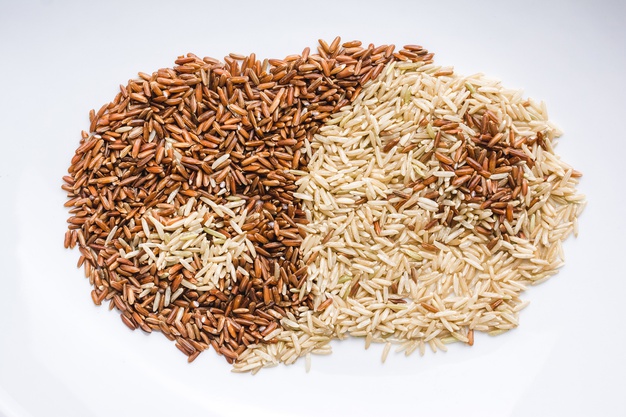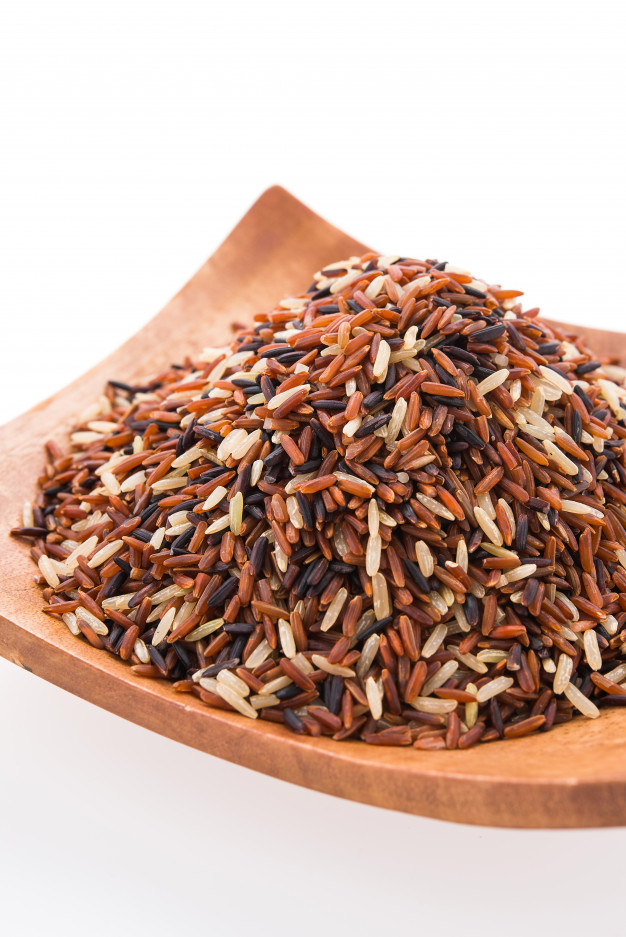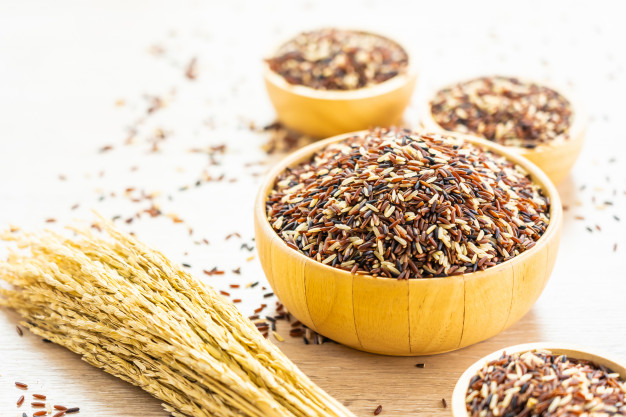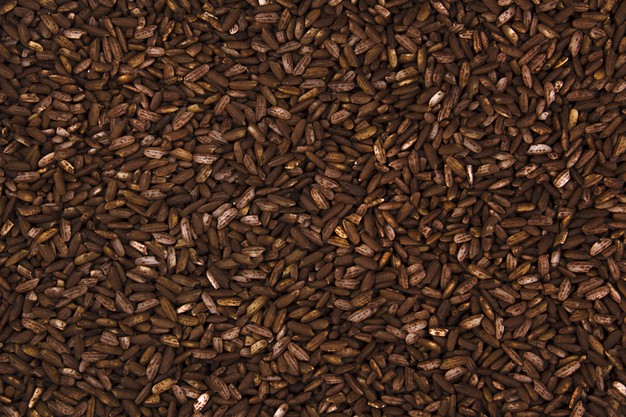Brown rice is the unpolished and unrefined whole grain cereal obtained by removing the hull of rice kernel. It is widely used for various therapeutic purposes.
What is germinated brown rice?
Germinated brown rice is basically unpolished brown rice, which is germinated for improving its flavor, texture as well as nutritive value thus it is considered as a healthier version of brown rice. The germination process is associated with enhancing the level of Vitamin B1, Vitamin B3, Vitamin B6, Vitamin E, gamma-aminobutyric acid (GABA), fibre, potassium and magnesium in brown rice.
What are the differences between brown rice and white rice?
It has seen that brown rice contains all parts of the grain, which include the fibrous bran portion, nutritious germ portion and the endosperm portion whereas the white rice does not contain the bran and the germ portion as these two portions are removed during its milling process. As the bran and germ portions are considered as the most nutritious part of the grain thus consumption of brown rice is believed to be healthier than consuming white rice.

Nutritional profile
- It contains desirable amount of carbohydrates. It mainly contains sugar, starch and sucrose as carbohydrates
- As it contains the bran and the germ portion of the grain thus it is considered as a rich source of fibre
- It contains protein as well. It is made up of various important amino acids
- It contains negligible amount of fat. It contains both saturated and unsaturated fatty acids but totally free from cholesterol
- It is packed with several important vitamins like Vitamin E, Vitamin K, choline, Vitamin B1, B2, B3, B5, B6 and B9
- It also contains various trace elements like calcium, phosphorus, magnesium, copper, manganese, selenium, sodium, potassium, iron and zinc
- It contains numerous biologically active compounds as well like polyphenols, flavonols, γ-oryzanol, gamma-aminobutyric acid, phytic acid etc all of which are responsible for exerting neutraceutical activities

Health benefits
Antioxidant activity
- We know that the grain, which undergoes milling process, is more prone to loose phytonutrients but as brown rice is less processed thus it contains more phytonutrients than white rice, which exert potent antioxidant activity
- Flavones and tricin are considered as the two most important components of brown rice that play significant role in reducing oxidative stress
- It also helps to stimulate the elimination of toxins from body thus helps in detoxification
- It helps to decrease the concentration of free radicals thus helps to keep health complications at bay

Role on digestive health
- It helps in digestion
- It helps to improve bowel movement
- It is also associated with increasing the bulkiness of stool hence prevents constipation
- Its fibre content helps to promote the growth of intestinal beneficial microbes hence improves overall gut health
- Being gluten free it is recognized as a healthy option for those patients who suffer from celiac disease
Role on skeletal health
- It plays imperative role in maintaining bone health
- Its magnesium, calcium and phosphorus contents are responsible for providing the bones their proper physical structures
- Magnesium component of brown rice plays significant role in preventing demineralization of bones
- Consumption of brown rice is very effective for decreasing the prevalence of osteoporosis and arthritis as well
Role on nervous system
- It plays imperative role in promoting the growth as well as the functionality of nervous system
- We know that high cholesterol level in body or prolong consumption of high cholesterol diet is directly linked with increasing the risk of developing neurodegenerative disorders and consumption of this rice is very useful for reducing the prevalence of neurodegenerative disorders as it is related with replacing cholesterol with other healthy nutrients especially with fibre hence helps in decreasing cholesterol concentration
- Its consumption is also related with improving cognition, memory and attention
- It also helps to protect the neurons from oxidative damages thus helps to enhance brain’s activity
- Individual suffer from Alzheimer’s disease or Parkinson’s disease should include brown rice in their diet


Role on maternal health
- It helps to improve overall maternal health status
- It is very effective for improving body’s resistance power against stress
- It has seen that women who consume brown rice during their lactation phase significantly improve their immune defense
Role on mental health
- It helps to provide a positive impact on mental health
- Consumption of brown rice especially germinated brown rice is very effective for preventing anxiety related disorders as it has antidepressant properties
- Brown rice contains various amino acids named glycine, glutamine and GABA which play imperative role in regulating the activity of those neurotransmitters that are responsible for inhibiting the allowance of messages related with stress, depression and anxiety thus it helps to improve the overall state of mind
Role on metabolism
- It contains adequate amount of B vitamins, which play important role in improving metabolism as they act as coenzymes and promote the action of various enzymes involve in metabolic reactions
- It helps in the metabolism of carbohydrate, protein and fat and helps to yield energy from them

Therapeutic uses
- It is a low glycemic food thus it is considered as an important therapeutic substance for diabetic patients. It helps to stabilize blood sugar concentration by preventing insulin resistance. Its phytic acid, polyphenols and fibre contents are also accountable for exhibiting hypoglycemic effects
- It has hypolipidemic activity too. Its consumption is closely related with reducing the concentration of LDL, VLDL and triglyceride in body
- Its lipid lowering activity is also responsible for reducing the risk of developing atherosclerosis hence decreases the prevalence of coronary artery disease
- It helps to prevent obesity as well
- It helps to improve the health and functionality of gallbladder and decreases the prevalence of gall stone formation
- It helps to prevent insomnia too
Culinary uses
- It is generally used along with proteins and vegetables for preparing a nutritious grain bowl for lunch
- It can also used for preparing porridges and brown rice porridge is considered as a healthy breakfast meal
- It can also used with eggs, avocados, salsa, and black beans for preparing savory break fasts
- It can be added with soup as well
- It can be used for preparing energy bars
 It can be used for preparing pudding too
It can be used for preparing pudding too- It can be tossed with vegetables and olive oils for preparing various nutritious as well as tasty side dishes
- Plant based burger can also be prepared with brown rice and black beans
- It can be used for preparing risotto
General consideration of using brown rice
- Brown rice contains essential natural oil therefore it should be preserved properly otherwise it may spoil and also becomes rancid
- It is better to purchase brown rice after checking the expiry date for ensuring its freshness
- It can be stored in refrigerator or can also be kept in room temperature
- It is better to store it in airtight container as it helps to improve its self life
- It has seen that raw grain can be stored up to six months but prolong storage of cooked rice is very risky as it is associated with triggering the growth of bacteria named Bacillus cereus, which contaminates the rice and consumption of such rice causes food poisoning
Risk factors
As it is rich in fibre thus its over consumption may cause various digestive disorders.

Source:
Gao, Y., Guo, X., Liu, Y., Zhang, M., Zhang, R., Abbasi, A.M., You, L., Li, T. and Liu, R.H., 2018. Comparative assessment of phytochemical profile, antioxidant capacity and anti-proliferative activity in different varieties of brown rice (Oryza sativa L.). LWT, 96, pp.19-25.
Imam, M.U., Azmi, N.H., Bhanger, M.I., Ismail, N. and Ismail, M., 2012. Antidiabetic properties of germinated brown rice: a systematic review. Evidence-based complementary and alternative medicine, 2012.
Pandey, S., Lijini, K.R. and Jayadeep, A., 2017. Medicinal and health benefits of brown rice. In Brown Rice (pp. 111-122). Springer, Cham.
Saleh, A.S., Wang, P., Wang, N., Yang, L. and Xiao, Z., 2019. Brown rice versus white rice: Nutritional quality, potential health benefits, development of food products, and preservation technologies. Comprehensive reviews in food science and food safety, 18(4), pp.1070-1096.
Upadhyay, A. and Karn, S.K., 2018. Brown Rice: Nutritional Composition and Health Benefits. Journal of Food Science and Technology Nepal, 10, pp.47-52.
Wu, F., Yang, N., Touré, A., Jin, Z. and Xu, X., 2013. Germinated brown rice and its role in human health. Critical reviews in food science and nutrition, 53(5), pp.451-463.
Zhang, G., Malik, V.S., Pan, A., Kumar, S., Holmes, M.D., Spiegelman, D., Lin, X. and Hu, F.B., 2010. Substituting brown rice for white rice to lower diabetes risk: a focus-group study in Chinese adults. Journal of the American Dietetic Association, 110(8), pp.1216-1221.









